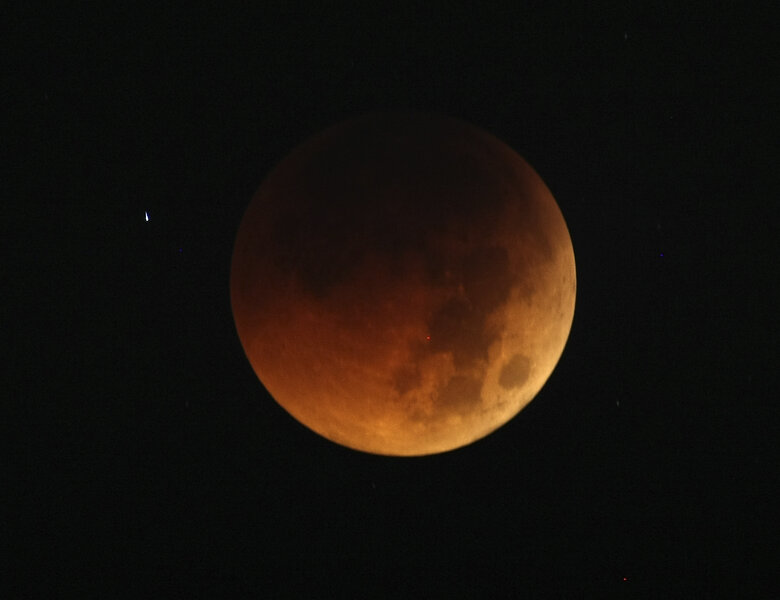Blood moon doomsday prophesy: The science behind the hype
Loading...
The lunar eclipse set to occur later this month has both skywatchers and some Christians excited, but for very different reasons.
John Hagee, founder and current leader of the Cornerstone Church in San Antonio, Texas, has been prophesying for months that the upcoming "blood moon," so named for the reddish hue that the moon takes on as it is illuminated by sunlight passing through the Earth's atmosphere, will bring calamity.
Hagee's 2013 book, "Four Blood Moons" sought to draw parallels between previous lunar eclipses and important events in Jewish history, such as the expulsion of Jews from Spain in 1492 to the creation of the Israeli state in 1948.
The upcoming eclipse is the fourth in a series that began on April 15 last year. Pastor Hagee told the London-based evangelical Christian news site Christian Today this next one will "point to dramatic events in the Middle East."
John Hagee Ministries' website also sells "Four Blood Moons" T-shirts, for $15, to spread the word about the link between the movements of celestial bodies and events on Earth.
"The heavens are God's billboard. He's been sending signals to Earth, and we haven't been picking them up," Hagee told Christian Today.
NASA, it is safe to say, does not share Hagee's interpretation. According to the space agency, the clustering of lunar eclipses is not a divine harbinger, but merely a consequence of the inclination of the moon's orbit around the Earth and the decreasing eccentricity of the Earth's orbit around the sun.
If the moon orbited us on the same plane that we orbit the sun, lunar eclipses would be a monthly occurrence. But instead, the moon orbits about five degrees off, meaning that the moon passes through the Earth's shadow much less frequently, between two and five times per year.
Eclipses, including this one, frequently occur in "tetrads," or groups of four. As the Monitor's Liz Fuller-Wright pointed out after the April 2014 eclipse, tetrads tend to happen in clusters.
For example, she writes, the years 1582 to 1908 saw no tetrads, but the period from 1909 and 2156 has 17. The most recent tetrad fell in 2003-2004.
Fuller-Wright continues:
The tetrad "seasons" are tied to the slowly decreasing eccentricity of Earth's orbit, which is still slightly oval-shaped. Once Earth's orbit becomes a perfect circle, in the distant future, tetrads will no longer be possible.
In the past, when apocalyptic predictions have peaked, NASA has sought to reassure the public. In 2012, amid anxieties of a Mayan armageddon, NASA was called upon to offer its comments as to whether or not the world would, in fact, end. "The Maya calendar did not end on Dec. 21, 2012, and there were no Maya prophecies foretelling the end of the world on that date,” said Dr. John Carlson, director of the Center for Archaeoastronomy.
Geoffrey Gaherty, a writer for Starry Night Education, comments, “As an ardent skywatcher who derives much pleasure from beautiful events like lunar eclipses, it saddens me that there are ‘prophets of doom’ in the world who view these life-enriching events as portents of disaster.”
The fourth lunar eclipse of the tetrad is set to begin with a penumbral eclipse at 8:11 p.m. Eastern Time on September 27 and end at 1:22 a.m. Eastern Time on the 28th.





